What's New
Displaying results 1711 - 1720 of 4899
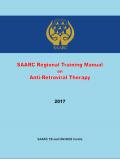
Resource | Guidelines,
ART training manual has been prepared for medical personnel (Medical doctors, Health Assistants, Staff nurses and other HIV/AIDS care providers) who had taken basic HIV training. The training manual is developed to train and built capacity of doctors, nurses, health assistants and other HIV/AIDS care providers working in public as well as private health institutions in the region to diagnose and manage HIV and HIV-related diseases, including opportunistic infections (OI). Improving care for OIs and HIV-related conditions is a critical component of HIV programs.
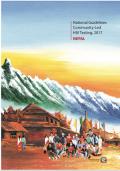
Resource | Guidelines,
Due to social and biomedical advances, and increased funding, the response to HIV globally has yielded remarkable results. There are better, improved tools for screening, diagnostics, and treatment of HIV. Community responses to HIV are also established as the cornerstone of effective, equitable and sustainable HIV programmes. People living with HIV, or at increased risk of HIV play a critical role in demanding and delivering services, supporting systems for health, and reaching those who are most vulnerable to HIV, where state facilities cannot, or are not equipped to do so.
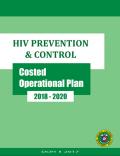
Resource | Guidelines,
The Health Sector Plan (HSP) HIV Prevention and Control Operational Plan 2018 - 2020 is a product of a series of consultations and participatory processes involving HIV program managers, representatives of the key populations (KP) communities, support civil society organizations (CSO), and the HIV Technical Working Group (TWG). These stakeholders are working from the national, regional, and local levels. The guidance of the National AIDS, STI Prevention and Control Program (NASPCP) and the Epidemiology Bureau (EB) was pivotal in crafting a realistic three-year HIV operational plan.
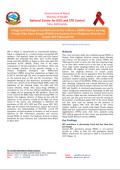
Resource | Fact Sheets,
This Integrated Biological and Behavioral Surveillance (IBBS) survey was carried out by the National Institute for Development and Research (NIDR) under the leadership of the National Center for AIDS and STD Control (NCASC). The existing National HIV and AIDS Strategy (2016-2021) identifies Female Sex Workers (FSWs) as one of the key affected populations (KAPs) at a higher risk of spreading the HIV epidemic. This is the sixth round of the IBBS survey conducted among FSWs in Kathmandu Valley.
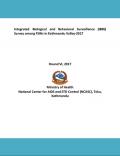
Resource | Publications,
This IBBS Survey among FSWs (FSWs) in Kathmandu Valley is the sixth round of survey. It was conducted first time in 2004. The survey was undertaken primarily to track the trend of HIV infection, to access information about the safe sex practices, sexual behavioral, knowledge of HIV and STI, explore the association between risk behaviors and infections with HIV or STI. More specifically, the survey was conducted to collect socio-demographic characteristics; alcohol and drug use and needle sharing behaviors; the experience of stigma, discrimination and physical, sexual and other forms of violence; and exposure to HIV and AIDs program.
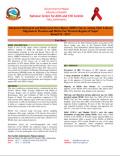
Resource | Fact Sheets,
Nepal is one of the major source countries of migrant laborers, helping to fulfill the demand of the rapidly industrializing countries in Asia and abroad. This is the sixth round of the Integrated Biological and Behavioral Surveillance (IBBS) survey conducted as a part of the national surveillance plan of NCASC among the Male Labour Migrants (MLMs). The objectives of the survey were to track the trend in the prevalence of HIV among MLMs and to explore the sexual risk behaviors associated with the HIV infection. This survey was carried during December 2016 to May 2017. This survey was carried out by the School of Planning Monitoring Evaluation and Research (SPMER) under the leadership of the National Centre for AIDS and STD Control (NCASC).
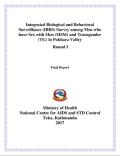
Resource | Publications,
HIV in Nepal is characterized as a concentrated epidemic. Nepal is categorized as a country facing concentrated HIV epidemic. IBBS surveys have been successfully conducted in various rounds in Nepal for the last about a decade among key populations at higher risk for HIV. This is the first round of IBBS surveys among MSM/TG of Pokhara Valley and carried out under the leadership of National Center for AIDS and STD Control (NCASC) with financial and technical support from Save the Children-Global Fund.
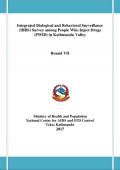
Resource | Publications,
This is the seventh round of Integrated Biological and Behavioral Surveillance (IBBS) survey conducted among People Who Inject Drugs (PWID) in Kathmandu Valley. The survey was undertaken primarily to track the trend of HIV, Hepatitis B (HBV), Hepatitis C (HCV) and Syphilis prevalence and to understand the associated risky sexual behaviors among the PWID of Kathmandu Valley.
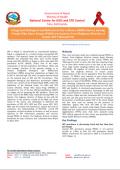
Resource | Fact Sheets,
This Integrated Biological and Behavioral Surveillance (IBBS) survey was carried out by Intrepid Nepal (INPL) under the leadership of the National Center for AIDS and STD Control (NCASC). People Who Inject Drugs (PWIDS) is considered as one of the key affected populations (KAPs) at a higher risk of spreading the HIV epidemic. This is the seventh round of the IBBS study conducted among PWIDs in Eastern Terai highway districts of Nepal.
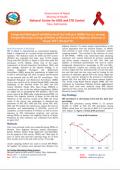
Resource | Fact Sheets,
This Integrated Biological and Behavioral Surveillance (IBBS) survey was carried out by Intrepid Nepal (INPL) under the leadership of the National Center for AIDS and STD Control (NCASC). People Who Inject Drugs (PWIDS) is considered as one of the key affected populations (KAPs) at a higher risk of spreading the HIV epidemic. This is the sixth round of the IBBS study conducted among PWID s in Western Terai highway districts of Nepal.





